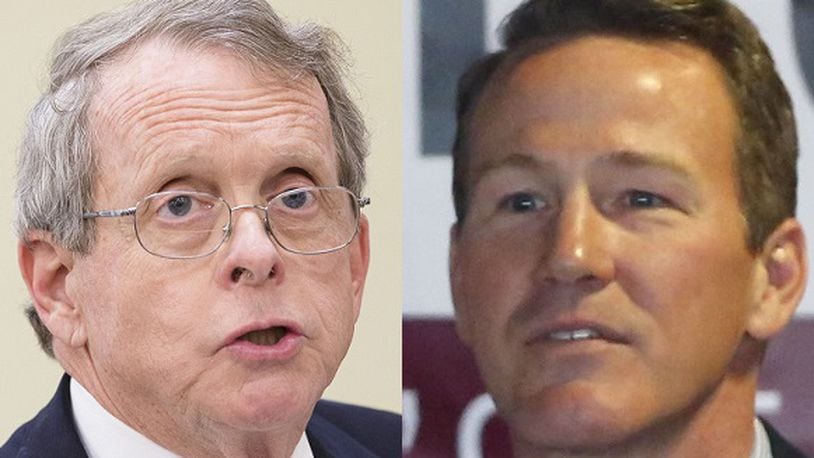Meanwhile, also seeking to become Ohio Republicans’ 2018 nominee for governor are Lt. Gov. Mary Taylor, of suburban Akron, and U.S. Rep, Jim Renacci, of Wadsworth. They may rethink their strategies given the DeWine-Husted partnership.
Republicans need to focus their fire on Democrats, not on each other, given that 2018 may well be a Democratic year in Ohio.
Six Democrats are or will be vying for that party’s gubernatorial nomination. Former Ohio Attorney General Richard Cordray, unseated by DeWine in 2010, is expected to soon announce for governor. Cordray most recently was director of the federal Consumer Financial Protection Bureau.
Democrats who’ve already announced for governor are Dayton’s mayor, Nan Whaley; state Supreme Court Justice William O’Neill; former state Rep. Connie Pillich, of Cincinnati; state Sen. Joseph Schiavoni, of suburban Youngstown; and former U.S. Rep. Betty Sutton, of suburban Akron. (O’Neill has said he won’t run if Cordray does.)
Democratic State Chair David Pepper, saying what a state chair is supposed to say about the other party’s candidates, characterized the DeWine-Husted ticket this way: “It’s not a surprise to see them team up; they are part of the status-quo Columbus insiders who have left behind so many communities and families across our state in the decades they’ve been in office.”
That theme – “insiders” – may resonate in some of the Ohio Republican Party’s furthest corners, where inexperience is considered a civic virtue. But DeWine and Husted are vote-magnets. And the object of a political party is to win elections, a precept Ohio Democrats might want to review. Moreover, as Ohio’s amateur-hour General Assembly demonstrates every time it meets, the Statehouse sorely needs experienced officeholders.
Here’s DeWine’s resume: Greene County prosecuting attorney; state senator; U.S. House member; Ohio’s lieutenant governor; U.S. senator; Ohio’s attorney general. Here’s Husted’s: Ohio House member; Ohio House speaker; state senator; Ohio’s secretary of state.
Politically speaking, it’s perfectly appropriate for Pepper to cite measures of economic drift, such as a data showing that Ohio’s “job growth has trailed the national average for 59 straight months.” But, while it’s true that Republican John Kasich has been Ohio’s governor over that span, Barack Obama – an inconvenient fact for Democrats – was in the White House for 48 of those months.
True, as a Republican strategist said last week, Ohio is looking like it could become blue-ish in 2016, thanks to Donald Trump’s antics and the GOP’s incompetent congressional leadership.
If so, that could give even a DeWine-Husted ticket a hard way to go next year. But Ohio voters can be selective — or, if that bugs you, contrarian. In 1974, in Watergate’s aftermath, voters returned Republican James A. Rhodes to the governorship and unseated Democratic Gov. John J. Gilligan (albeit, by just 11,000 votes). And in 1988, Ohio gave GOP presidential nominee George H.W. Bush a 470,000-vote edge over Democrat Michael Dukakis, but re-elected Democratic Sen. Howard M. Metzenbaum, a liberal’s liberal from Greater Cleveland, by 600,000 votes; Metzenbaum defeated an otherwise unbeatable Republican, Cleveland mayor and future Gov. George V. Voinovich.
Given that, there’s nothing predictable about 2018 – except that Ohio’s Republicans, as usual, seem better at lining up slates than Ohio Democrats are.
About the Author
